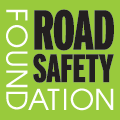MINISTER BACKS CALL FOR NATIONAL OLDER DRIVERS PLAN
Britain’s most persistent high risk Á’ road is set for an upgrade with help from a £1 million cash boost announced by the Government on 14 November.
Under Secretary of State for Transport Andrew Jones MP said that he hoped the targeted funding for West Sussex County Council would be used in part to improve the A285 between Petworth and Chichester. The steeply winding road which climbs the South Downs experienced 23 fatal and serious injury crashes between 2012-14 with motorcyclists involved in 39% of accidents. Run offs accounted for 48% of accident types.
The Minister made the announcement at the Road Safety Foundation launch of the 2016 EuroRAP results in London. This year’s report, sponsored by the insurer Ageas, is entitled Making Road Travel as Safe as Rail and Air and pinpoints the A285 as the road with the most persistent high risks of death and serious trauma as measured by the EuroRAP protocol. The report tracks the Most Improved Roads and Persistently Higher Risk Roads across 45,000km of road in Great Britain.
Launching the report, the Chairman of the Road Safety Foundation, the Rt Hon Lord Whitty, said the commonly expected levels of safety for rail and air travel can be achieved on UK’s roads. He spoke of a new initiative by the Road Safety Foundation and the RAC who are now starting to develop a national pathfinding portfolio of safer road investment plans addressing persistent high risk roads. ‘I hope this work will provide a model that local authorities can adopt successfully,’ he said.
The Minister, announcing funding to tackle the most persistent high risk road, welcomed the new initiative by the two charities. He told the audience of stakeholders, professionals and elected local authority members that applying the Star Rating system can not only help identify road safety problems but also help find cost-effective solutions to high risk roads.
The Chief Highways Engineer of Highways England, Mike Wilson, spoke of the goal for national roads that no-one should come to harm on its network. Its immediate target was that 90% of travel should be at 3-Star or better on the strategic road network by 2020.
The report also quantifies the high economic cost of road traffic crashes. Between 2012-14 road crashes in Kent, Essex and Hampshire cost each county more than £0.5billion of losses. The CEO of Ageas UK , Andy Watson, spoke of the catastrophic impact of the most serious crashes leading to brain injury, paraplegia or quadriplegia. He said that such crashes also had high financial costs. More than £20m can be needed to provide a lifetime of care for an injured young person
- Download the full report as page spread
- Download the full report as single page
- Regional Summary for Britain
- Download the Risk Rating map for Britain with Parliamentary Constituency boundaries
- Download the Risk Rating map for Scotland
- Download the Risk Rating map for Yorkshire & the Humber
- Download the Risk Rating map for West Midlands
- Download the Risk Rating map for East Midlands
- Download the Risk Rating map for North-West
- Download the Risk Rating map for North-East
- Download the Risk Rating map for East of England
- Download the Risk Rating map for Wales
- Download the Risk Rating map for South-East
- Download the Risk Rating map for South-West
- Download the full press release

